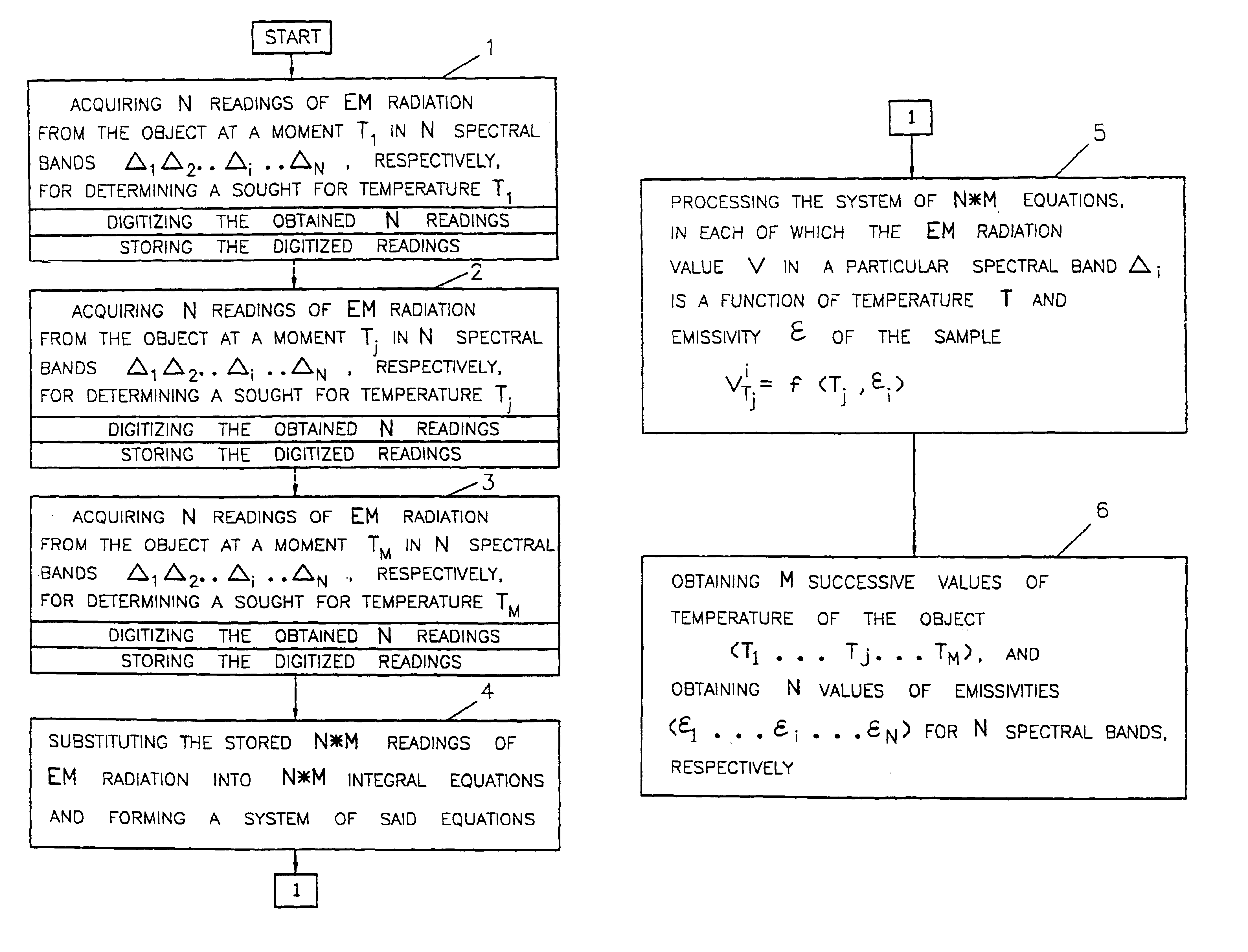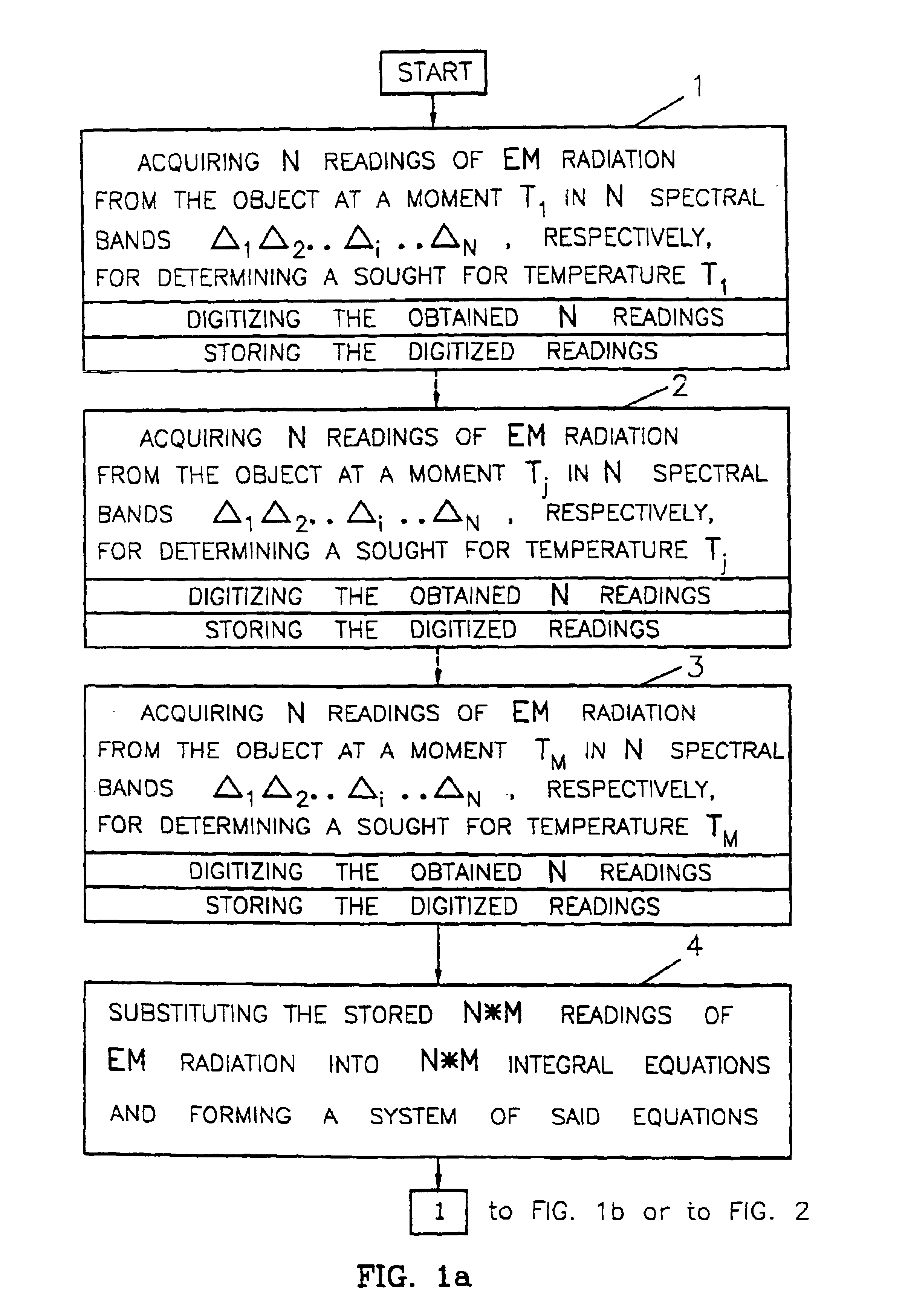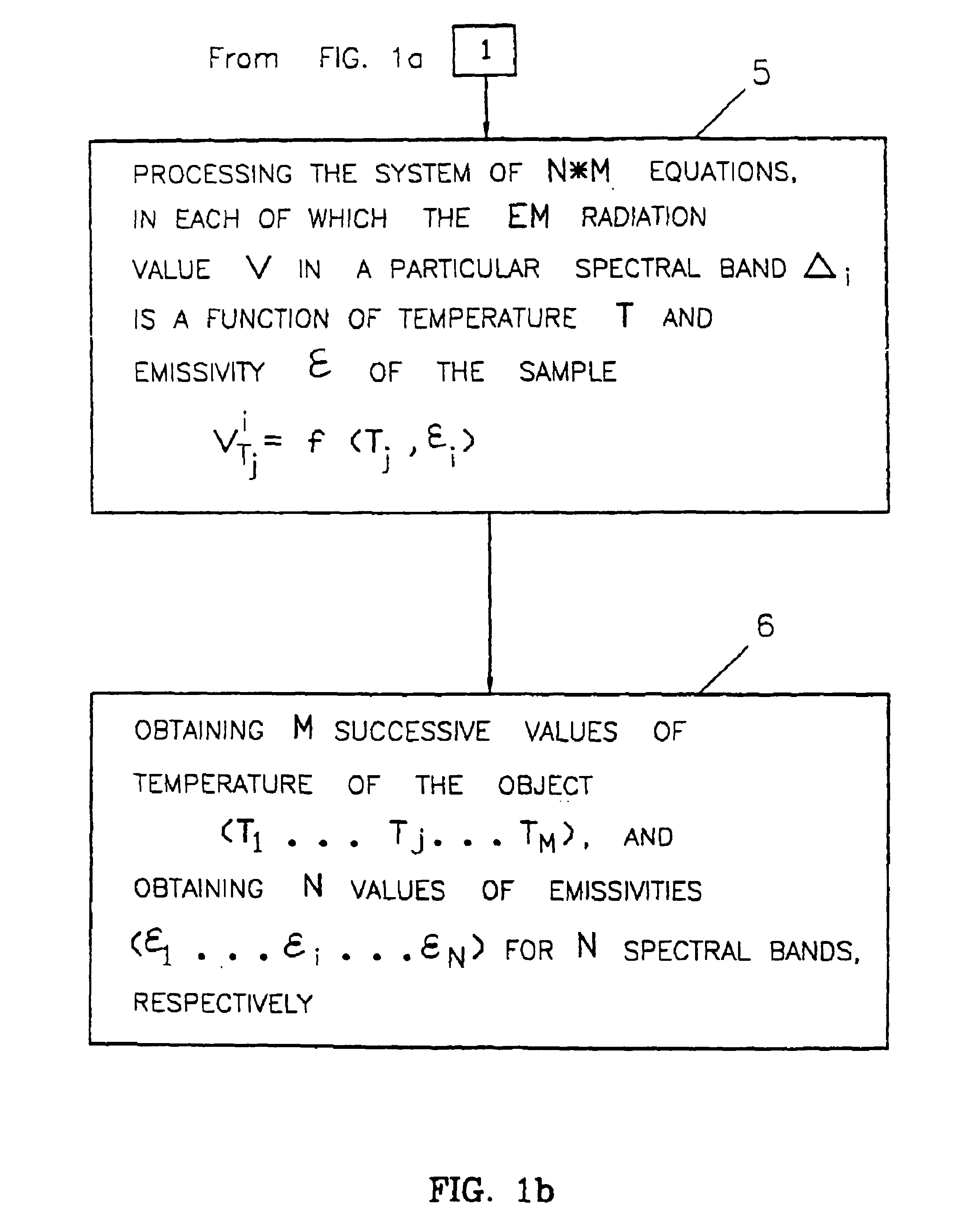Detection and recognition of objects by multispectral sensing
a multi-spectral sensing and object technology, applied in the field of detection and recognition of objects by multi-spectral sensing, can solve problems such as determining the emissivity function of real objects
- Summary
- Abstract
- Description
- Claims
- Application Information
AI Technical Summary
Benefits of technology
Problems solved by technology
Method used
Image
Examples
Embodiment Construction
Before relating to the drawings, some basic terms and indications of constants and variables are to be introduced, which will bc used further below in the examples of the inventive method.
In the case, when the method is applied to detecting and recognizing objects on or above the Earth's surface. a multi-spectral scanning means (e.g. radiometer) scans the area of the surface under investigation at at least one pixel at a time. The radiation received from each pixel by the radiometer, and by a pyranometer which receives radiation from the sky, serves as input for processing means which computes descriptive and characteristic maps of the selected region. The processing software is based on the Planck's equation:
W=∫τA(λ)τO(λ)ε(λ,T)B(ε,T)dλ+∫τA(μ)τO(μ)(1−ε(λ,T))J(λ,TS)dλ (1)
where the integral is over the spectral region of the sensor under consideration and where:W is the radiation received by the radiometer,τA(λ) is the spectral atmospheric transmissivity which can be obtained from s...
PUM
 Login to View More
Login to View More Abstract
Description
Claims
Application Information
 Login to View More
Login to View More - R&D
- Intellectual Property
- Life Sciences
- Materials
- Tech Scout
- Unparalleled Data Quality
- Higher Quality Content
- 60% Fewer Hallucinations
Browse by: Latest US Patents, China's latest patents, Technical Efficacy Thesaurus, Application Domain, Technology Topic, Popular Technical Reports.
© 2025 PatSnap. All rights reserved.Legal|Privacy policy|Modern Slavery Act Transparency Statement|Sitemap|About US| Contact US: help@patsnap.com



